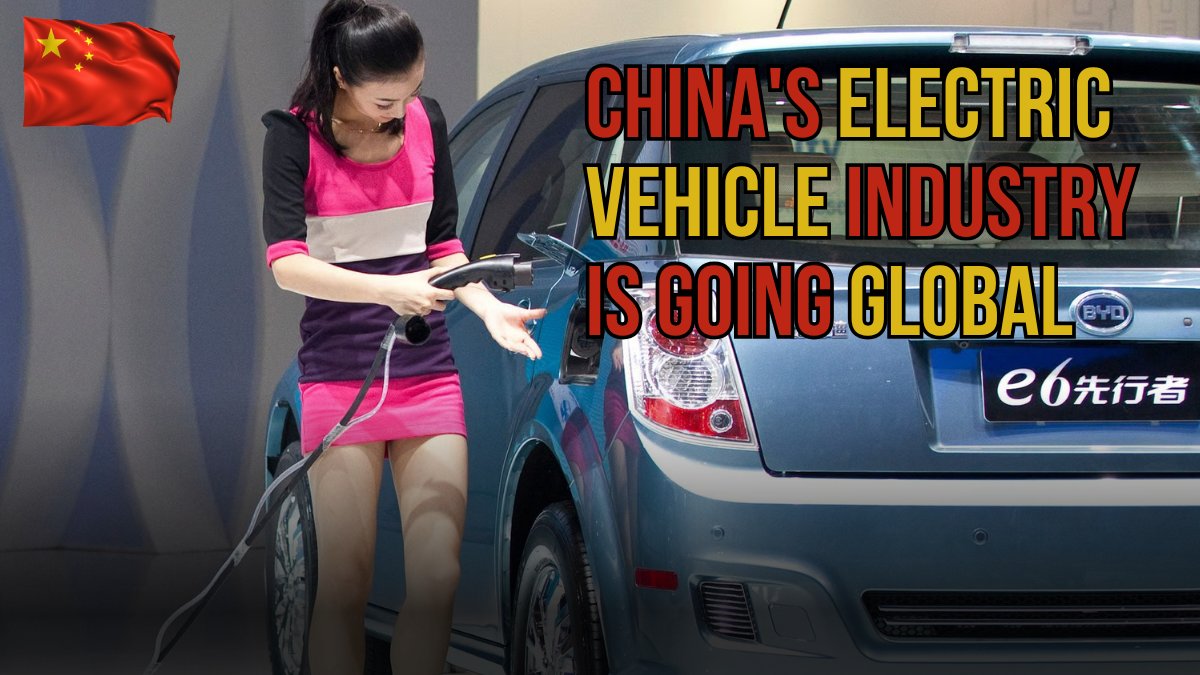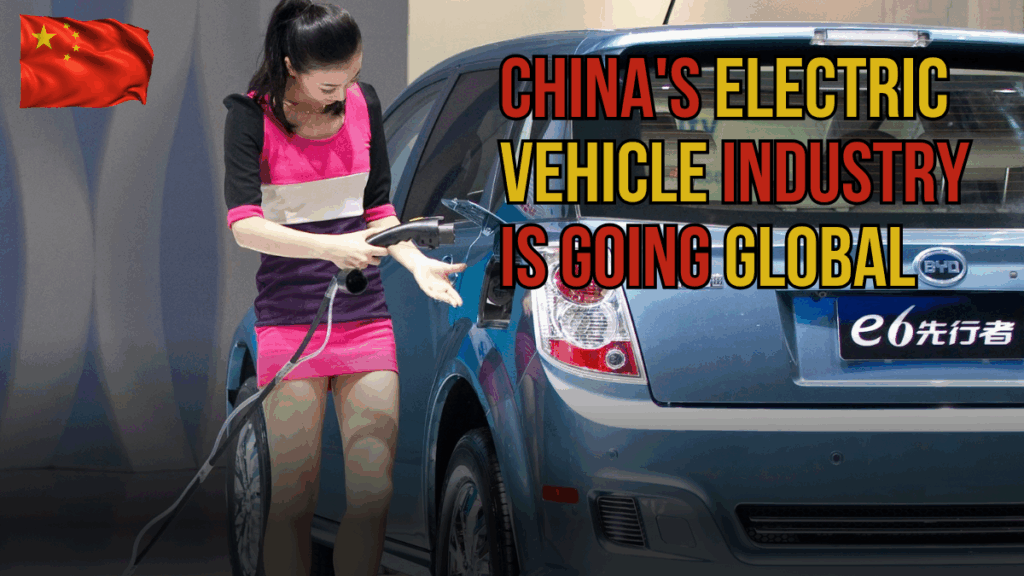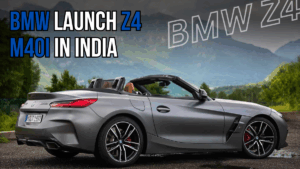The 2025 Shanghai Auto Show highlighted China’s rapid rise as a global leader in electric vehicles (EVs). Once known for copying Western designs, Chinese automakers now dominate with cutting-edge technology, sleek designs, and affordable prices. From breakthrough battery innovations to self-driving systems, the show revealed how China is setting the pace in the future of mobility.

Summary Table: China’s Electric Vehicle Revolution
Key Insight |
Details |
|---|---|
Location |
Shanghai Auto Show, China |
Main Theme |
China’s emergence as a global electric vehicle (EV) leader |
Leading Companies |
BYD, Nio, Xiaomi, CATL, Huawei, XPeng |
Market Share |
China controls over 60% of global EV market |
Key Technologies |
Fast-charging batteries, autonomous driving, smart entertainment systems |
Domestic Market Shift |
Chinese consumers prefer homegrown brands over foreign automakers |
Export Growth |
441,000 EVs exported in Q1 2025, up 40% YoY |
Global Trade Context |
Trade tensions and tariffs with the U.S., EU, and Canada |
Official Site |
A New Era: Shanghai Auto Show and China’s Technological Statement
The 2025 Shanghai Auto Show was not just a car exhibition it was a declaration. Covering over 60 football fields of floorspace and pulsing with music, lights, and high-tech reveals, it showcased China’s rise to the top of the global electric vehicle (EV) sector. Where legacy Western automakers once led the charge, China’s domestic champions such as BYD, Nio, and Xiaomi now dominate.
From flying cars and five-minute battery charges to AI-assisted driving, Chinese EV makers are transforming what it means to drive in the 21st century. Armies of livestreamers broadcast specs and unveilings across the country while massive crowds thronged the show floors to witness the future of mobility.
Chinese Innovation Takes the Wheel
Years ago, Chinese car manufacturers were seen as imitators. Today, they are leaders. BYD, once a humble battery company, outsold Tesla in global EV sales. Its new Denza Z sportscar, designed by former Audi and Lamborghini talent, was a showstopper.
Xiaomi, better known for its smartphones, drew long queues with its new car models. Nio dazzled with its luxury ET9 sedan, directly targeting premium European offerings. China’s rapid innovation, combined with smart pricing, is creating a formidable global force.
A Shift in Domestic Power
2023 marked a turning point: Chinese consumers chose local brands over foreign ones. This shift was driven by quality, innovation, and value. Brands like BYD now hold over 30% of China’s “new energy vehicle” market, and China itself controls more than 60% of global EV sales.
Public trust in homegrown technology is rising. Vehicles are not only efficient but offer luxury-like features at competitive prices. The democratization of technology from AI-driven safety features to La-Z-Boy-style massage seats is redefining automotive expectations.
Competitive Innovation: A Double-Edged Sword
China’s EV sector is thriving but also brutally competitive. BYD’s recent battery can add 250 miles of range in just five minutes. CATL, not to be outdone, unveiled an even faster-charging battery.
Huawei and Momenta are escalating the arms race in autonomous driving technology. BYD has pledged to equip even its low-cost models with advanced driver-assistance systems like “God’s Eye.”
However, government crackdowns on unsafe marketing practices after fatal incidents show that oversight is catching up with innovation.
A Global Trade Power Play
As China surges ahead, it is increasingly at odds with the U.S. and EU. Tariffs from the U.S. and Canada on Chinese EVs now reach 100%. The European Union has launched an anti-subsidy investigation and raised tariffs up to 45%.
Despite these barriers, Chinese EV exports jumped 40% in Q1 2025 alone. Automakers are eyeing Southeast Asia, the Middle East, Latin America, and Africa as new growth frontiers.
Even influencers like Thai YouTuber Julaluck Chanasri are shifting preferences from Toyota and Honda to BYD, signaling brand appeal beyond China.
The Legacy of Industrial Policy
China’s journey from “bicycle kingdom” to EV powerhouse began in the early 2000s. With aggressive policy support, the government subsidized EV adoption, invested in infrastructure, and cornered the global battery supply chain.
Entrepreneurs like BYD’s Wang Chuanfu and early foreign investment (e.g., Warren Buffett’s stake in BYD) fueled this growth. Tesla’s Shanghai Gigafactory validated China as the world’s EV hub, driving costs down and scaling innovations.
The Global Impact of China’s EV Ecosystem
John Helveston from George Washington University noted that Western automakers once dismissed EVs due to cost. Now, thanks to China’s scaled production and supply dominance, EV prices are falling rapidly.
Today, over half of new cars sold in China are hybrids or EVs. In contrast, the U.S. remains under 25%, highlighting the gap in adoption.
Foreign Automakers Adapt or Fall Behind
Foreign automakers are responding with new joint ventures and tech partnerships:
- Volkswagen: Adopted an “in China, for China” strategy.
- Toyota: Partnered with Momenta and BYD.
- Stellantis: Selling Leapmotor EVs outside China.
- GM/Buick: Working with Momenta and CATL.
These efforts, however, face the headwinds of a fast-moving market and growing domestic loyalty.
Looming U.S.-China Auto Trade War
The U.S.-China auto trade landscape is heating up. With 100% tariffs on EV imports and tightening export controls on semiconductors, the EV industry sits at the center of geopolitical tension.
Ford halted vehicle shipments to China, and companies like Pony.AI are bracing for restrictions on critical U.S.-made chips. Analysts predict an increasingly divided auto market, with China driving the EV transition globally while the U.S. risks isolation.
Frequently Asked Questions (FAQs)
Q1: Why is China leading the electric vehicle industry?
Ans. China combines government policy, massive production scale, R&D investment, and consumer demand to dominate the EV space.
Q2: Who are the major Chinese EV manufacturers?
Ans. Key players include BYD, Nio, XPeng, Li Auto, and battery makers like CATL.
Q3: Are Chinese EVs available globally?
Ans. Yes, exports are rising quickly, especially to Southeast Asia, Europe, and South America.
Q4: How do Chinese EVs compare in quality to Tesla or Volkswagen?
Ans. Chinese EVs now offer comparable or superior features at lower prices, making them competitive in both technology and cost.
Q5: What are the risks to China’s EV expansion?
Ans. Trade wars, overcapacity, government regulation, and international pushback on subsidies all pose risks.
Conclusion: China Sets the Pace
China’s rise as an EV superpower is reshaping the global automotive industry. What was once a Western-led space now sees China as the epicenter of innovation, production, and consumer enthusiasm.
Whether foreign automakers can adapt, or if China continues to export its auto dominance worldwide, remains to be seen. But one thing is clear: the road ahead is electric, and China is in the driver’s seat.
For official industry data, visit the China Association of Automobile Manufacturers.
For More Information Click Here





